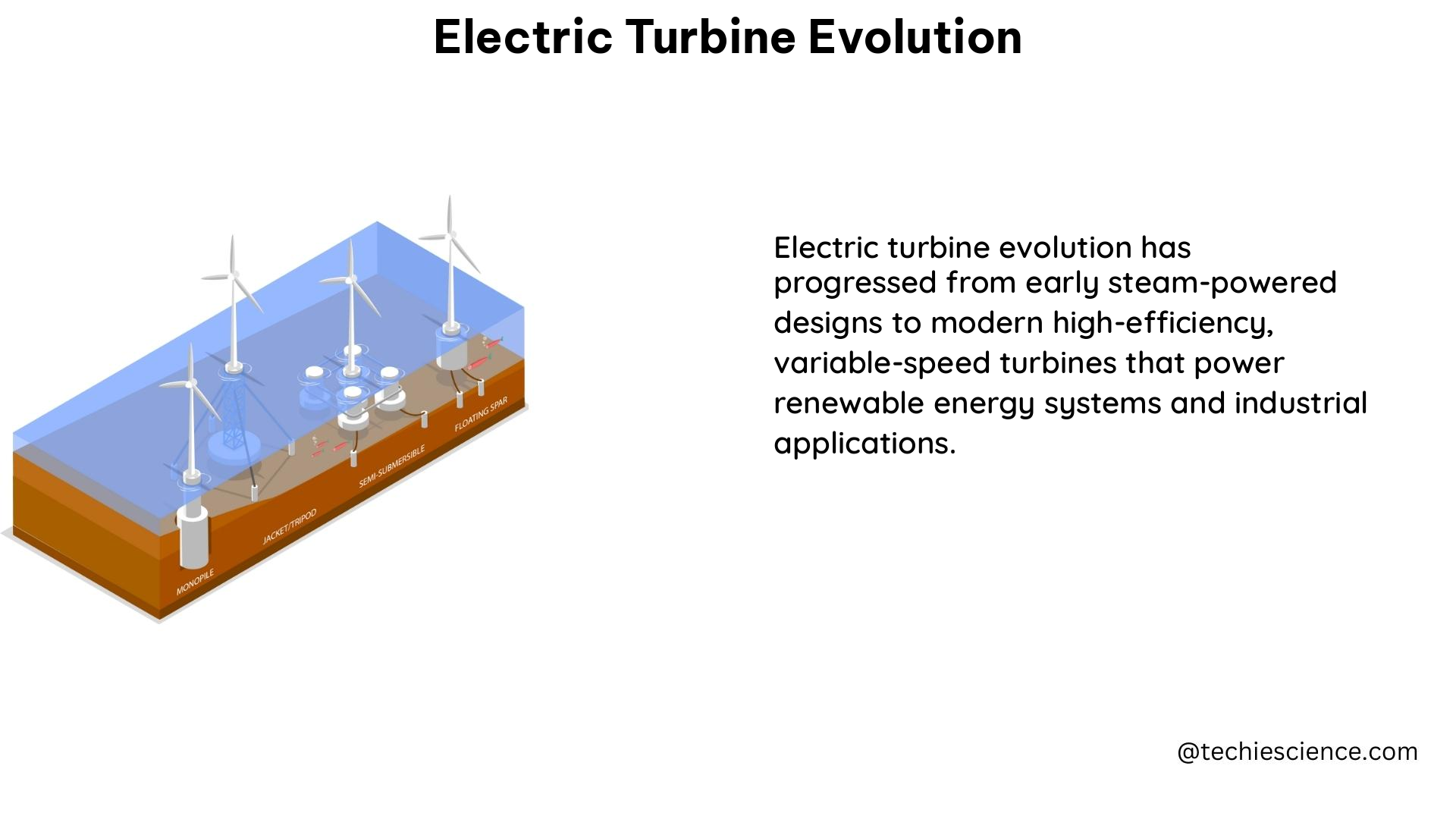The evolution of electric turbines has been marked by a remarkable increase in turbine size and power output, particularly in the Chinese wind market. Over the past decade, the Chinese wind market is expected to grow by 6.2% annually, leading to the development of over 400 different turbine models by nearly a dozen competing Original Equipment Manufacturers (OEMs). This aggressive turbine growth has been driven by the emergence of several Chinese wind OEMs, nine of which have revealed plans for 10 MW+ onshore wind turbine platforms, and similar trends exist in the offshore sector, where the announcements of the first 20 MW+ platforms took place in China.
Turbine Size and Power Output Expansion
The rapid expansion of turbine size and power output in the Chinese wind market has been a defining characteristic of the industry’s evolution. According to a recent report by Wood Mackenzie, the average turbine size in China has grown from 1.5 MW in 2010 to over 3 MW in 2022, with some OEMs unveiling plans for 10 MW+ onshore platforms. This growth has been driven by several factors, including:
- Economies of Scale: Larger turbines offer greater economies of scale, allowing wind farm operators to generate more power from fewer turbines, reducing installation and maintenance costs.
- Technological Advancements: Improvements in materials, blade design, and generator technology have enabled the development of larger and more powerful turbines.
- Policy Incentives: The Chinese government has implemented various policies and incentives to promote the development of larger, more efficient wind turbines, such as feed-in tariffs and tax credits.
Turbine Pricing and Profitability Concerns

While the aggressive growth in turbine size and power output has been a hallmark of the Chinese wind market, it may also prove to be unsustainable. In 2023, Chinese turbine prices dropped by over 30%, indicating a potential profit crunch for Chinese wind companies. This price decline can be attributed to several factors, including:
- Overcapacity: The rapid expansion of the Chinese wind market has led to an oversupply of turbines, putting downward pressure on prices.
- Competition: The emergence of numerous Chinese OEMs has intensified competition, leading to price wars and reduced profit margins.
- Technology Maturity: As wind turbine technology matures, the cost of manufacturing and installing these systems has decreased, leading to lower prices.
Technical Advancements in Wind Turbine Design
Alongside the growth in turbine size and power output, the evolution of electric turbines has also been marked by significant technical advancements. One such advancement is the development of wind turbine rotors with integrated trailing-edge flaps, designed for active control of rotor aerodynamics. This technology, developed and field-tested by the Wind Energy Technologies department at Sandia National Laboratories, has shown promising results:
- Power Output Comparison: The rotor’s generator power at the 0-degree flap setting was compared with the generator power of a previous CX-100 test, revealing a power loss ranging from 7 to 15% and early initiation of stall at around 13 m/s.
- Flap Angle Effects: Positive flap angles produced roughly the same power, while negative flap angles produced noticeable decreases in power ranging from -5 kW at -10 degrees to -10 kW at -20 degrees.
Another significant technical advancement in the evolution of electric turbines is the study of eddy viscosity in the wake of a wind turbine. Researchers have obtained eddy viscosity values at each downstream location from the slope of a least squares linear regression between S13|w and ε. This analysis has provided valuable insights into the wake flow dynamics and the potential for improving turbine placement and wake management strategies.
Emerging Trends and Future Outlook
As the electric turbine industry continues to evolve, several emerging trends and future developments are worth noting:
- Offshore Wind Expansion: The announcements of the first 20 MW+ offshore wind turbine platforms in China suggest a growing focus on larger, more powerful offshore wind systems.
- Hybrid and Integrated Systems: The integration of wind turbines with other renewable energy technologies, such as solar photovoltaics and energy storage systems, is expected to become more prevalent, improving the overall efficiency and reliability of wind power generation.
- Digitalization and Automation: The increased adoption of digital technologies, such as sensors, data analytics, and autonomous control systems, is expected to enhance the performance, reliability, and maintenance of wind turbines.
- Sustainability and Environmental Considerations: As the industry matures, there will be a greater emphasis on the environmental impact of wind turbine manufacturing, installation, and decommissioning, leading to the development of more sustainable and eco-friendly solutions.
In conclusion, the evolution of electric turbines has been a dynamic and multifaceted process, characterized by significant increases in turbine size and power output, particularly in the Chinese market. While this aggressive growth has been driven by various factors, including technological advancements and policy incentives, the potential for unsustainable profit margins highlights the need for a balanced and strategic approach to the industry’s development. As the electric turbine industry continues to evolve, it will be crucial for stakeholders to navigate the complex landscape of technical, economic, and environmental considerations to ensure the long-term viability and sustainability of wind power generation.
References:
– Rapid Wind Turbine Technology Evolution in China
– Wind Turbine Technology Evolution is Diverging Quickly Between China and the Rest of the World
– Smart Wind Turbine Data
– Eddy Viscosity Evolution in the Wake of a Wind Turbine

The lambdageeks.com Core SME Team is a group of experienced subject matter experts from diverse scientific and technical fields including Physics, Chemistry, Technology,Electronics & Electrical Engineering, Automotive, Mechanical Engineering. Our team collaborates to create high-quality, well-researched articles on a wide range of science and technology topics for the lambdageeks.com website.
All Our Senior SME are having more than 7 Years of experience in the respective fields . They are either Working Industry Professionals or assocaited With different Universities. Refer Our Authors Page to get to know About our Core SMEs.